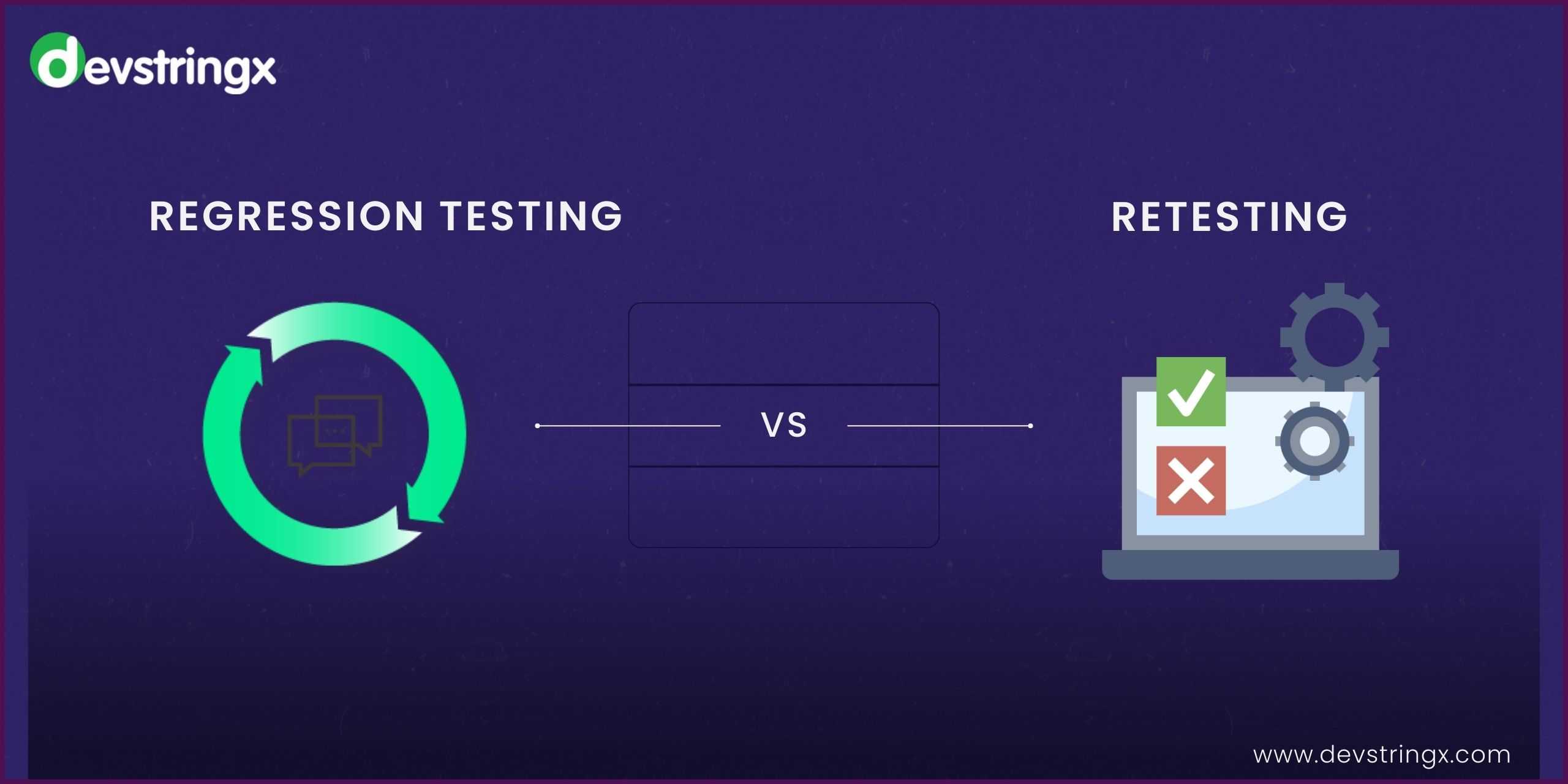Regression Testing vs Retesting – Devstringx
Have You Ever Considered The Prime Motto of Software Development?
Well, it is the need for making sure that a particular program matches the demands and requirements of a large target audience.
Dependable, high-quality content with zero bugs and errors is the central pillar of consumer happiness.
To build a product that your consumers can trust, you must pay special attention to software testing. It helps find the flaws in a program and fix them for better software development.
What are the most important software testing types, you ask? They are – regression testing and retesting.
What Is Regression Testing?
The literal meaning of the term regression in English is to return to its former condition or state. However, in software jargon, this is not necessarily a good thing.
This is the reason why software developers perform regression testing before launching their final software. It is done to verify that new features and additions do not negatively affect the previous features of the program.
To perform a regression test on any program, software developers first create a regression suite. This suite contains a variety of test cases to check the older features and updates of the program.
Such tests mostly automate because they build up parallels with software updates as changes.
What Is Retesting?
As you read in the above section, regression testing detects any bugs and performance errors in the previous updates of the program. This is not the case with retesting.
As the name suggests, retesting define as checking previously detected bugs and code errors and fixing them. This is the type of testing method that is followed for fixed bugs.
After getting a clear idea of these terms, we suggest you move on to their noteworthy differences.
Recommended to Read – Jmeter vs Loadrunner
Differences between Regression Testing and Retesting
If you’re preparing for a QA team interview or software development, then the must-prepare question for the tech interview is regression testing and retesting.
Look at the table below to clear your doubts about these terms!
| Basis for Comparison | Regression Testing | Retesting |
|---|---|---|
| Purpose | This kind of testing usually performs by software developers to ensure that any progressive coding changes do not affect the existing features or previous updates of an application. | Retesting usually perform by software developers to ensure that the previous failed test cases are detected, fixed, and rechecked for functionality. |
| Basis | Regression testing revolves around new code changes. It is taken up to verify whether the existing functionalities affect or not after the addition of new test cases. | Retesting performs by software developers based on the existing defects and the idea to fix them. |
| Defect Verification | Regression testing does not involve defect verification. | Retesting involves defect verification. This is because, in retesting, an existing defect is first detected, then fixed, and then retested to endure that it’s functional. |
| Priority | For any QA testing team, it is crucial to fix the existing bugs and errors in the program before proceeding with the addition of newer functionalities. Therefore, it is a lower priority to retest. | Retesting carry out at a higher priority than regression testing. |
| Automation | Organizations can benefit immensely by automating their regression testing processes. This is because manual regression testing can often be too cumbersome and expensive. | The test cases used in retesting can’t be automated due to an overlooking uncertainty around them. |
| Type of testing | It considers a generic test. | Retesting on the other hand considers planned testing because you first need to detect the existing bugs to fix and verify them. |
| Type of defect detection | Regression testing detects newer defects in the program after the addition of any new functionality or feature. | Retesting, however, verifies whether the existing defects in the program have been fixed or not. |
| Use Case |
|
|
Recommended to Read – Tools for Automation Testing
Conclusion
There’s a very thin line of difference between regression testing and retesting. We hope that the above-mentioned tabulated differences help hit these concepts home for you!
With these notable differences, you can better decide which of these testing methods works best for you!
Frequently Asked Questions
- Which type of testing – regression or retesting is better for business organizations?
A dynamic culmination of both these techniques is essential for comprehensive software development.
- What are the similarities between regression and retesting?
Both of these are black-box testing techniques that base on the concept of repetition. Black Box testing is a type of software testing that examines the functionality of a program without peeking into its internal structure.
- Which out of the two can automate?
Regression testing can automate. Automated tools and software can use to check workflows, scripts, and other parts of regression testing.
If you are interested in even more software testing-related articles and information from us here at Devstringx, then we have a lot to choose from for you.














